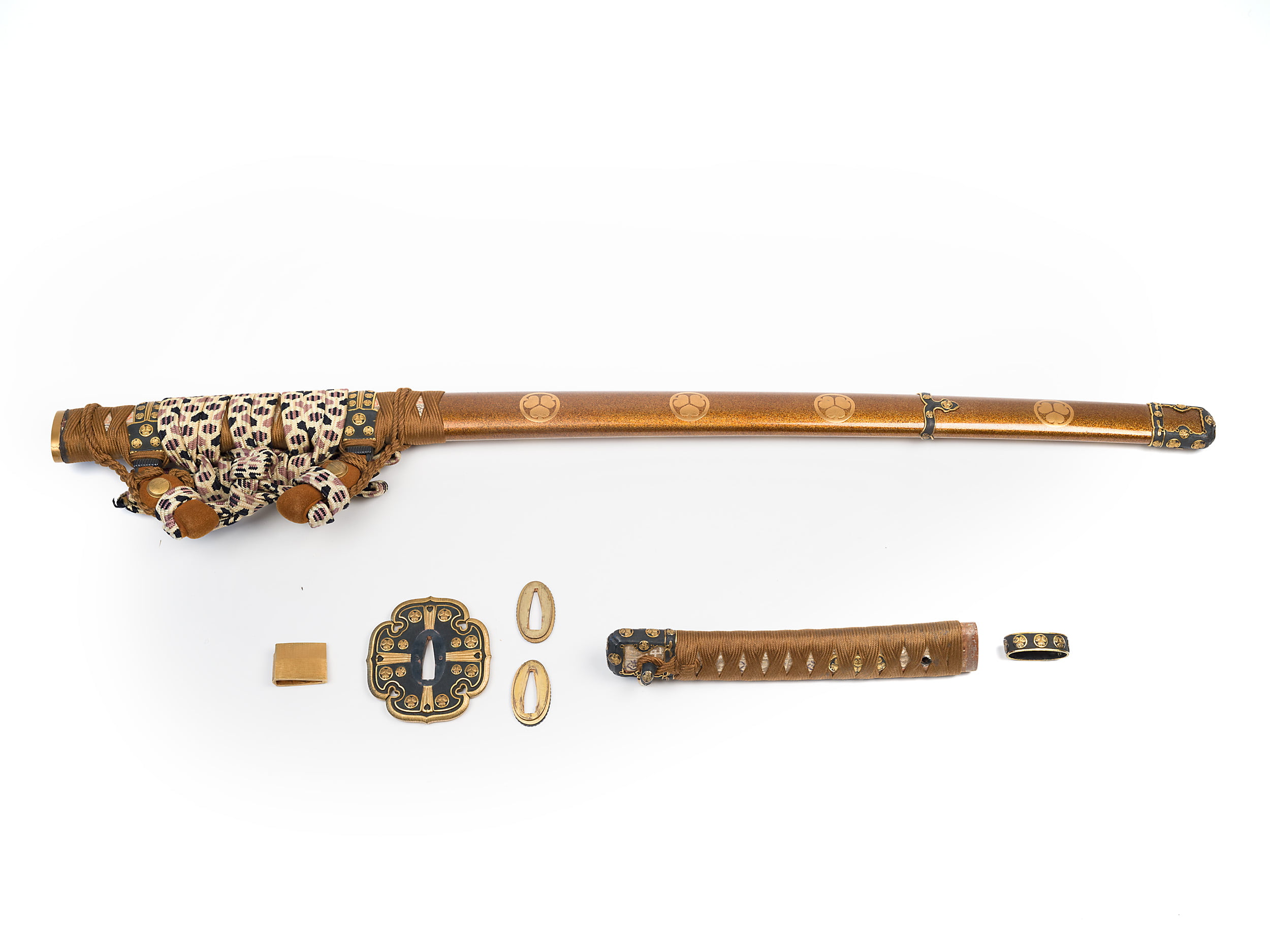A mumei itomaki-no-tachi (糸巻太刀) from the Shinshintô period (late Edo period) of which the distinguishing feature is the beautiful and rich silk cord (ito) wrapped around the upper part of the saya, similar to how the tsuka is wrapped. Itomaki-no-tachi were used by high ranking samurai or Imperial court nobility for ceremonies and official functions. The elaborate decorations and expensive materials used were a sign of the high lineage and significance of the owner. The mounting on this tachi has been beautifully lacquered in gold nashiji and bears the three-leaf mallow coat of arms of the Tokugawa family (Aoi Mon) who ruled Japan for 268 years during the Edo period under the Tokugawa shogunate.
The nagasa is 68cm and blade of the tachi is shogu zukuri which means the kissaki is curved, similar to the most popular style of blade, the shinogi zukuri but without a yomote (ridge line). The curvature of the blade is koshizori sugata which means the highest degree of curve comes at the lower part of the blade near the tang. The hamon is midareba with elements from both the gunome and choji patterns and the hada or is itame-hada and mokume-hada, or in other words a wood-like pattern.
Provenance:
Private collection, Japan
Private collection, Germany
Private collection, Switzerland


Kunstberatung Zürich AG
Börsenstrasse 27 8001 Zürich Switzerland
VAT Number: CHE-113.608.140
+41 44 381 50 40
contact@kunstberatung-zurich.com
©2025 Kunstberatung Zürich AG No part of this website may be reproduced, distributed, stored in a retrieval system or transmitted in any form or by any means, electronic, mechanical, or otherwise, without the prior permission of Kunstberatung Zürich AG.